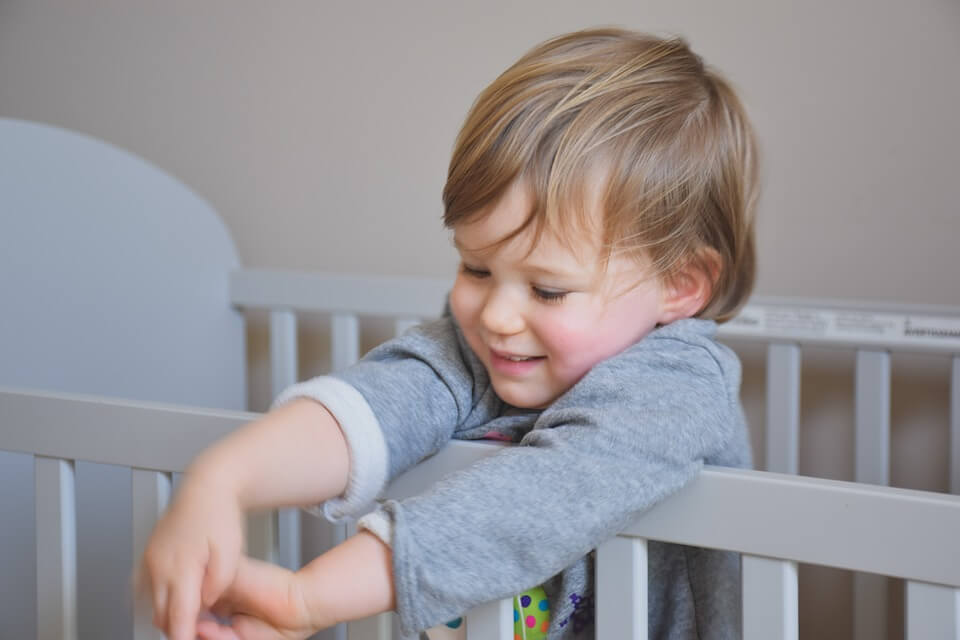How Should Your Baby’s Crib Be?

Your baby’s crib should be safe and comfortable. Pediatricians recommend that cribs should be wide, comfortable, approved and stable. The shape doesn’t matter, as long as it’s safe for the baby.
Arranging the baby’s room can be very exciting. Many parents go to great lengths to decorate the room.
When it comes to picking a crib however, it should meet certain safety standards. It’s important to keep several issues in mind to guarantee their safety.
For example, your baby’s crib should be placed in an area of the room that is away from excessive heat or cold. It should also be placed away from windows to avoid exposure to drafts. The crib shouldn’t be placed under a painting or by shelves.
It’s important to keep objects that may fall away from your baby’s crib. Toys should also be kept outside the crib.
Another thing to keep in mind is the quality of the varnish and paint that is used. Make sure it isn’t toxic.
The crib should be safe
It should have a minimum internal height of 60 centimeters between the deepest point of the crib and the highest point of the railing.

If it has bars, the separation between them should be between 4.5 and 6.6 centimeters. This will prevent the baby from inserting their head or any other limb between them.
It can have two or more wheels of which at least two must be able to lock.
The crib can be made out of latex, visco-elastic or other materials. Its thickness can oscillate between 8 and 15 centimeters.
There shouldn’t be a gap larger than 2 centimeters between the mattress and the edge of the crib.
The mattress should also be hard; this will prevent the baby from sinking into it. It should also be breathable and resistant.
The mattress should have an appropriate size in comparison to the crib. A small mattress may leave gaps that could trap the baby’s arms or legs.
Pediatricians also recommend putting a protector over the mattress. There are anti-dust mite and hypoallergenic covers that are available.
Pillows aren’t recommended until the age of 2 because they increase the risk of suffocation. After the age of 2 they can use flat pillows.
Crib placement
They should never be placed around objects that may fall, nor should it be decorated with ribbons since they could pose a risk to the baby. Toys should be kept outside the crib in order to prevent the child from getting hurt.
Parents should decide whether the child will sleep in the same room or if they’ll sleep in different rooms. Some parents opt for co-sleeping in the same bed during the first months of the baby’s life.
It’s very important for the baby to sleep close to the parents during the first months. This will allow parents to attend to the child rapidly in the case of any problems, such as if the child chokes, vomits or has a fever.
If you’re going to use baby monitors, it’s best to use wireless ones. Between 2004 and 2010, the United States security commission received seven reports of babies who were strangled with monitor cables.
“You will see my body become a crib for the child of your dreams to be born.”
-Laura Victoria, poet, journalist and Colombian diplomat-
Bedding is also important. Avoiding pillows before the age of two can also reduce the risk of sudden death syndrome. Ideally, the child should sleep on a mattress that is covered by an adjustable sheet.
The use of blankets and soft stuffed animals should also be avoided when it comes to bedtime.
There are also cribs that favor skin-to-skin contact. Other convertible designs are available that turn into furniture for the child such as chests, drawers or desks when the child no longer needs it.
Parents should make sure the crib meets international safety standards. It’s also important to monitor the way the baby sleeps when placed in the crib.
Experts recommend placing the baby face up when they take naps and when they go to sleep at night. This is especially recommended when the child is less than a year old.
When the baby is a little older and can already turn around on their stomachs, you can give them a little more freedom.
This text is provided for informational purposes only and does not replace consultation with a professional. If in doubt, consult your specialist.
